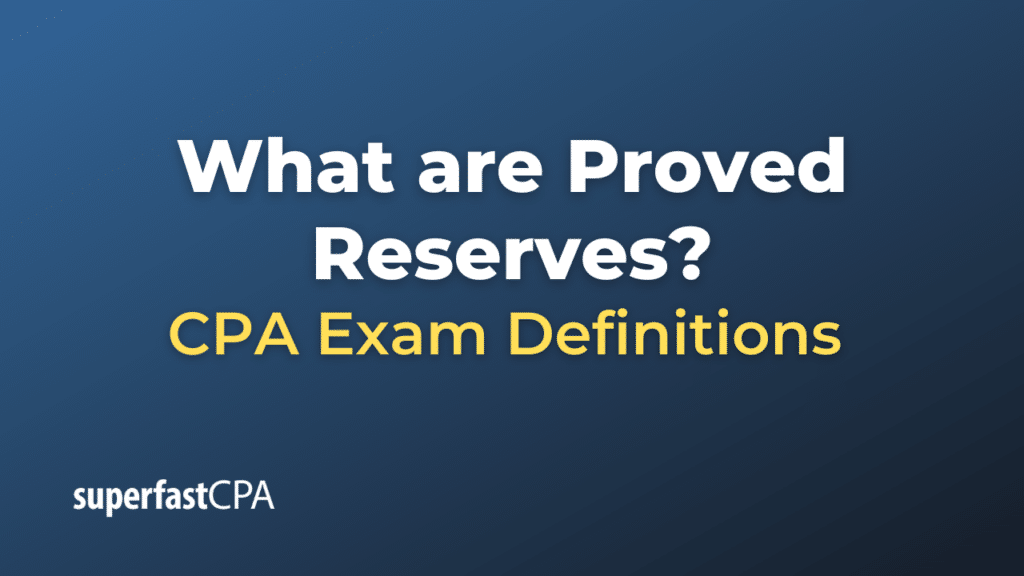Proved Reserves
Proved reserves, also known as proven reserves, are a classification used in the oil and gas industry to describe the amount of oil or natural gas that has been discovered and can be economically and legally extracted with a high degree of certainty, typically with at least 90% confidence.
Proved reserves are subdivided into “proved developed reserves” and “proved undeveloped reserves.”
- Proved Developed Reserves: These are reserves that can be recovered from existing wells with existing equipment and operating methods. These reserves are expected to be recovered in the short term and have a high degree of certainty.
- Proved Undeveloped Reserves (PUDs): These reserves are expected to be recovered from future wells or from existing wells where a relatively significant expenditure is required for recompletion. PUDs are reserves that have been discovered and are recoverable but have not yet been developed due to various reasons like lack of infrastructure or current economic factors.
The quantity of proven reserves is an important metric for oil and gas companies as it is an indicator of the company’s asset base, future production capacity, and it plays a crucial role in the company’s valuation. However, it’s important to note that the extraction of proved reserves must be economically viable with current technology and under current economic conditions, and must be legally permissible.
The estimation of these reserves involves careful examination by geologists and petroleum engineers, and the estimates often change as new information or technology becomes available, or as economic conditions change. The definitions and standards for classification of these reserves are overseen by regulatory bodies such as the U.S. Securities and Exchange Commission (SEC) and the Society of Petroleum Engineers (SPE).
Example of Proved Reserves
Let’s say there’s an oil and gas company called “ABC Energy.”
ABC Energy operates several oil fields. Over the years, through extensive geological surveys and drilling activities, they have identified various oil reservoirs. The reserves in these reservoirs are classified based on their level of certainty and the stage of development.
- Proved Developed Reserves: In one of their mature oil fields, “Field X,” they have drilled numerous wells that are actively producing oil. The technology, infrastructure, and economic conditions are in place to extract this oil, and the estimates of the amount of oil are based on actual production data. These reserves are thus classified as “proved developed reserves.” Let’s say ABC Energy has 200 million barrels of proved developed reserves in Field X.
- Proved Undeveloped Reserves (PUDs): In a newer oil field, “Field Y,” ABC Energy has drilled some exploratory wells and conducted geological surveys. They’ve discovered a large oil reservoir, and the data indicates that there’s a 90% likelihood that the oil can be economically and legally extracted. However, the field isn’t fully developed yet – they need to drill more wells, and more infrastructure needs to be put in place. These reserves are thus classified as “proved undeveloped reserves.” Let’s say ABC Energy has estimated 300 million barrels of PUDs in Field Y.
So, in their annual report and other disclosures, ABC Energy would report that they have a total of 500 million barrels of proved reserves (200 million barrels of proved developed reserves + 300 million barrels of PUDs). This is a key indicator of ABC Energy’s potential future oil production, and is a critical factor that investors and analysts would consider when assessing the company’s value and future prospects.
It’s important to note that estimates of proved reserves are not precise measurements – they’re estimates based on the available geological and engineering data, and they can be revised over time as more information becomes available or as conditions change.













